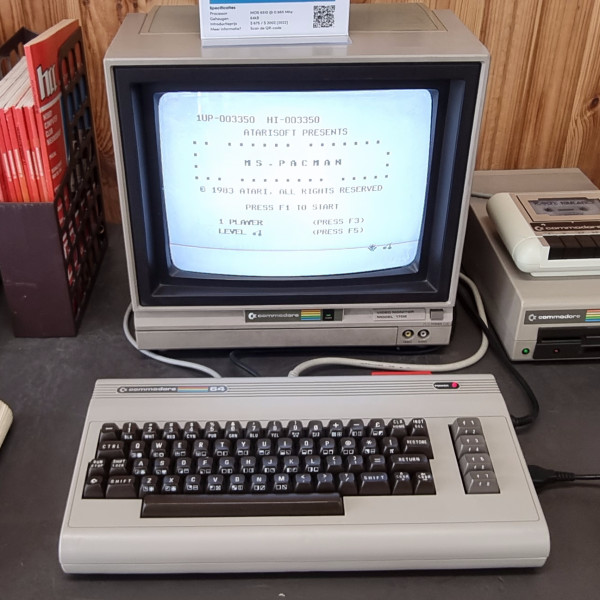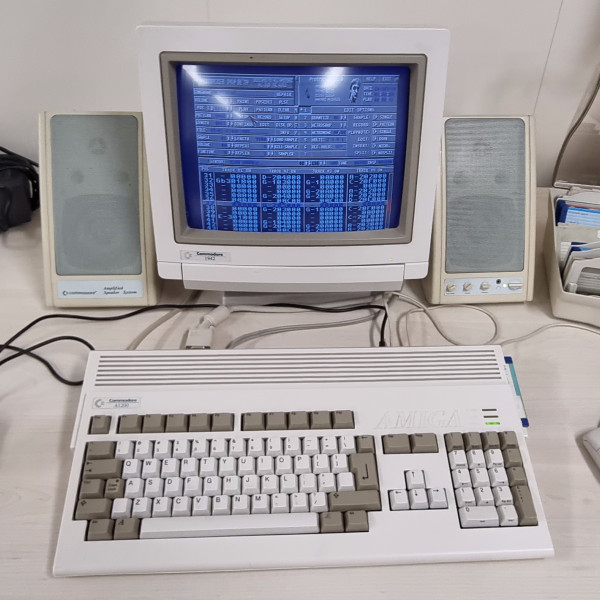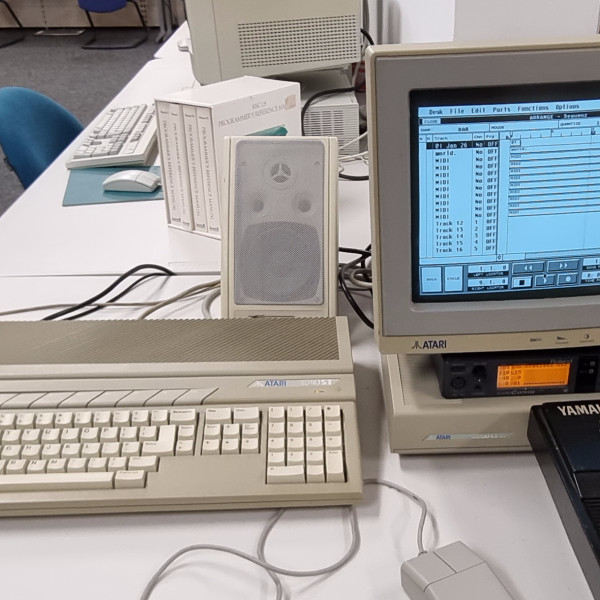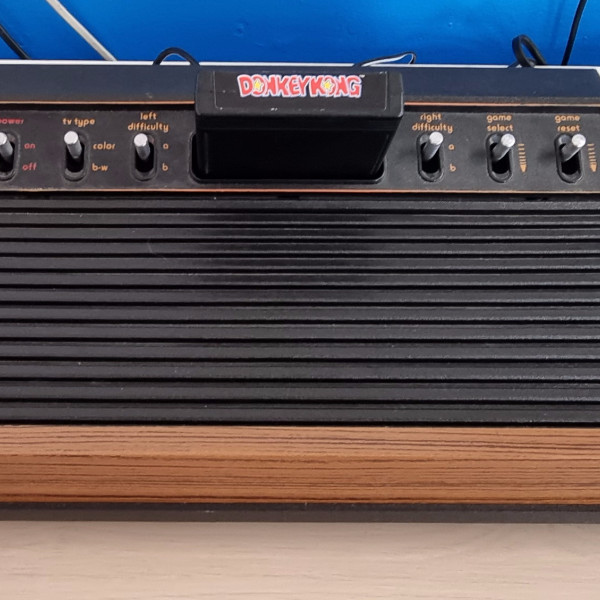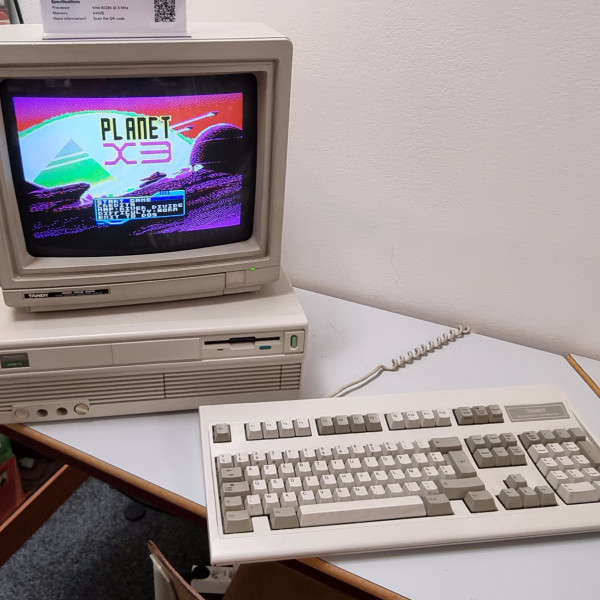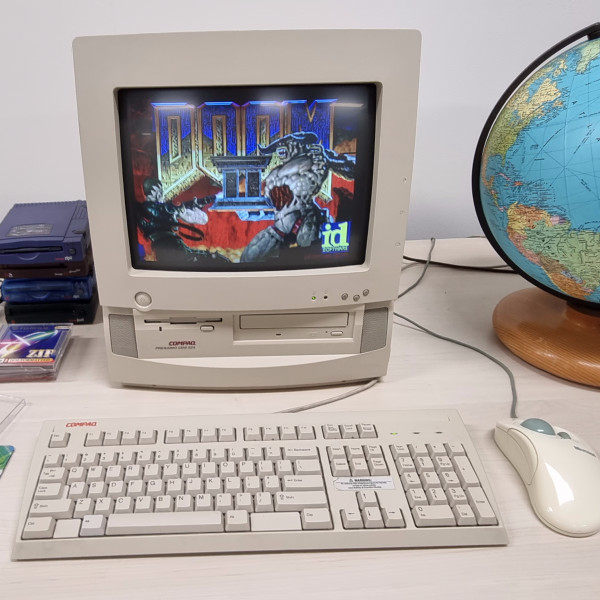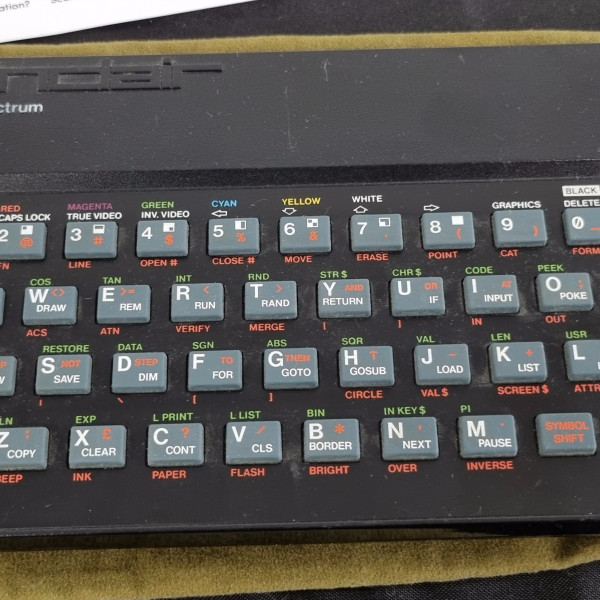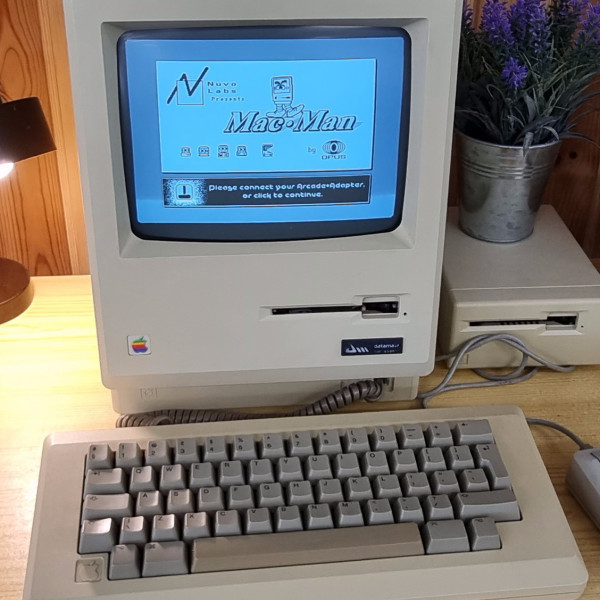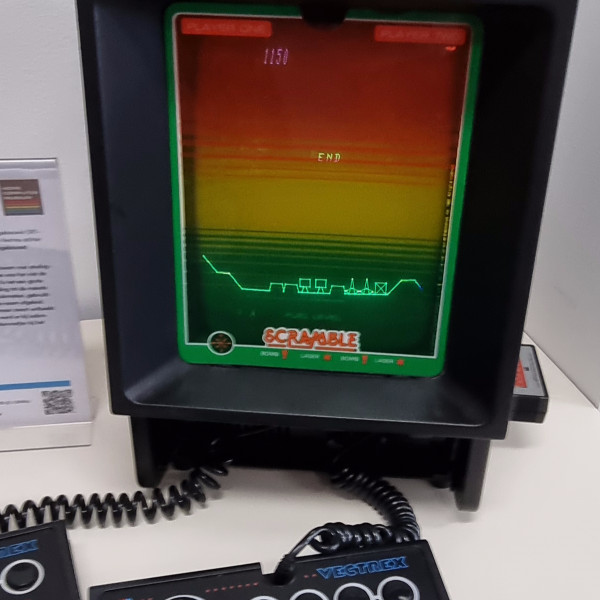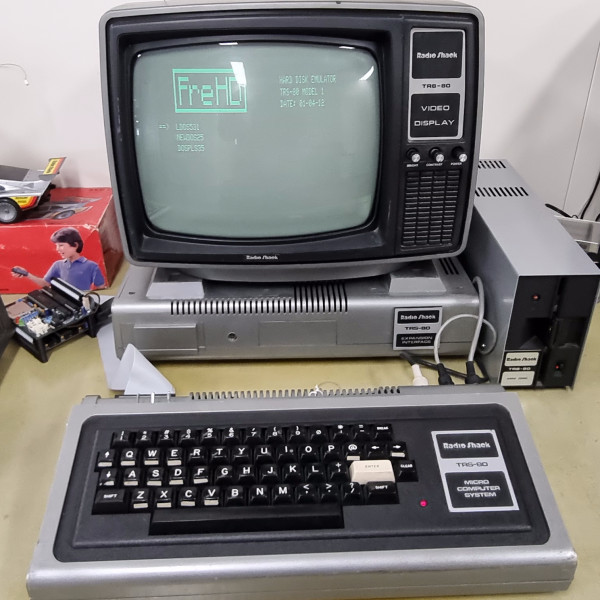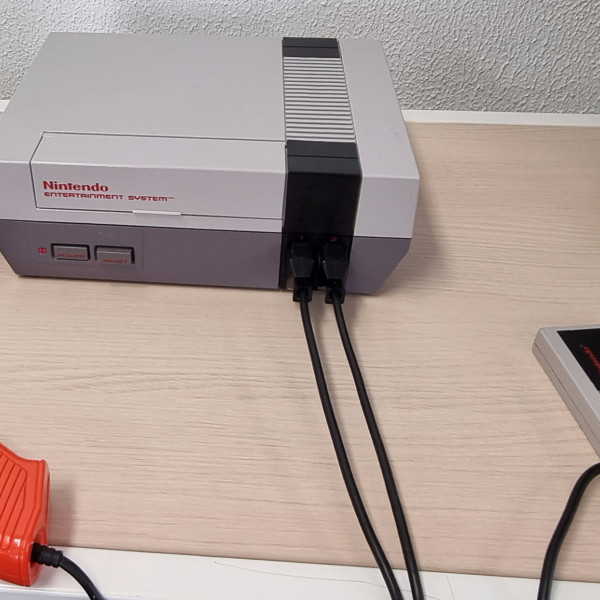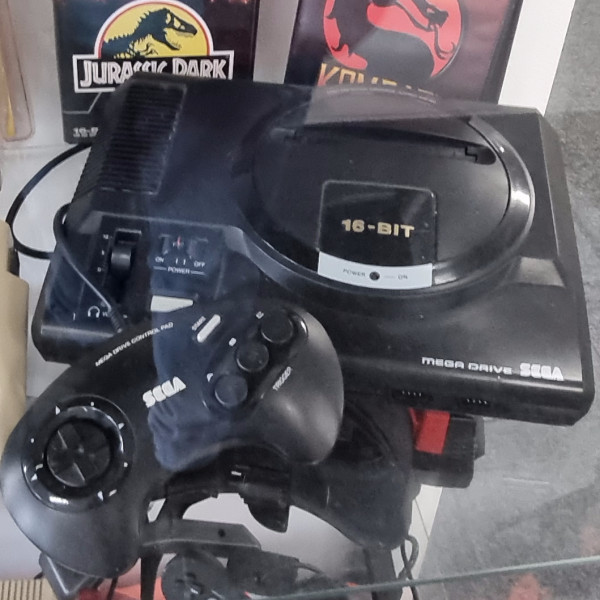The Commodore 64, or C64, is a popular retro computer from 1982. It had impressive graphics, sound capabilities, and a large library of games. With its 64KB of RAM, it was versatile for programming and educational use. The C64 is fondly remembered as a pioneering home computer.
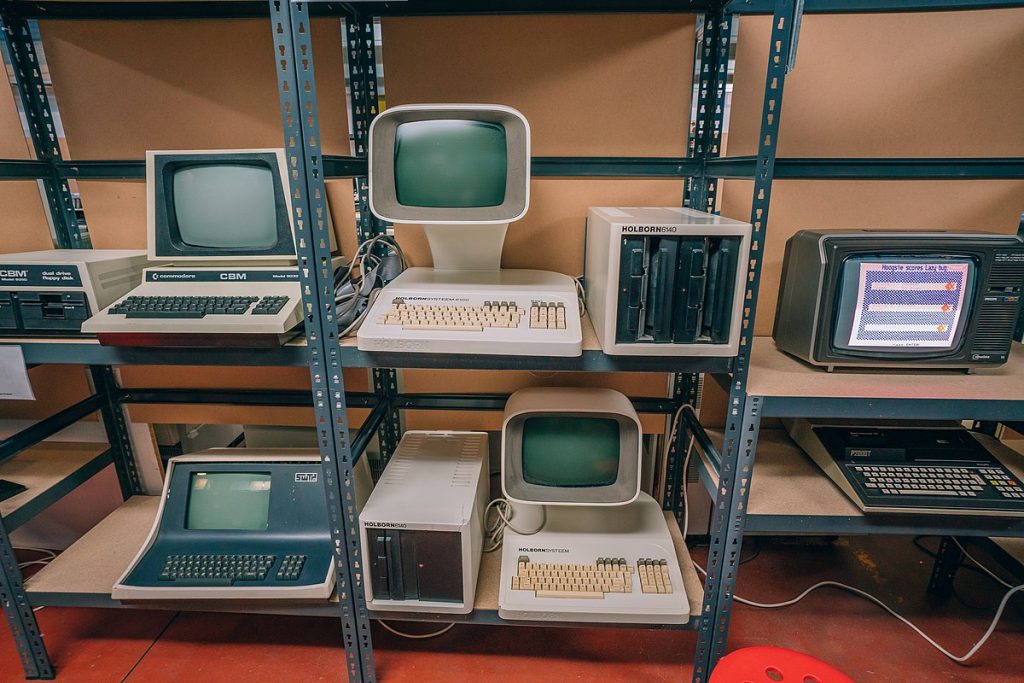
Retro Computers
Retro Computing
Commodore 64
Commodore Amiga
The Commodore Amiga, commonly known as the Amiga, is a renowned line of computers that was introduced by Commodore International in 1985. The Amiga series gained popularity for its advanced multimedia capabilities and impressive graphical performance, making it a favorite among gamers, multimedia enthusiasts, and creative professionals.
The Amiga computers featured a unique custom chipset that allowed for superior graphics and sound compared to other computers of the time. It offered a wide range of colors, advanced audio capabilities, and multitasking capabilities, making it well-suited for multimedia applications and gaming.
With its powerful graphics and sound capabilities, the Amiga became a hub for innovative game development, producing many classic titles. It also found success in the field of desktop video production and graphic design, thanks to its advanced graphics and animation capabilities.
The Amiga series evolved over time, with various models released, including the Amiga 500, Amiga 1200, and Amiga 4000, each offering improved hardware specifications and software compatibility.
Although Commodore faced financial difficulties and the Amiga's market share declined in the 1990s, the Amiga community remained passionate and dedicated. Today, the Amiga holds a strong nostalgic appeal and is celebrated as an iconic computer that pushed the boundaries of multimedia and gaming during its prim
Atari ST
The Atari ST was a line of 16-bit home computers released in the 1980s. It had a graphical user interface called Atari TOS and was popular among musicians for its built-in MIDI support.
The Atari ST had a wide range of games, but here are three popular titles that were well-received on the platform:
Dungeon Master: Released in 1987, Dungeon Master was a critically acclaimed first-person role-playing game that pushed the boundaries of the genre. It featured real-time combat, intricate puzzles, and a detailed dungeon environment, providing a captivating and immersive gaming experience.
Another World (Out of This World): Originally released in 1991, Another World was a groundbreaking cinematic platformer. It followed the story of a young scientist transported to an alien planet and faced with various challenges. The game stood out for its atmospheric visuals, smooth animation, and innovative gameplay mechanics.
Speedball 2: Brutal Deluxe: Published in 1990, Speedball 2 was a futuristic sports game that combined elements of ice hockey and handball. Players controlled a team of armored athletes competing in high-speed matches filled with aggressive tactics and power-ups. The game offered fast-paced action, multiplayer modes, and addictive gameplay.
Atari game consoles
Three iconic games for Atari game consoles:
Pitfall!: Pitfall! was released in 1982 for the Atari 2600 console and became one of the platform's best-selling games. Players controlled a character named Pitfall Harry as he navigated through a treacherous jungle filled with hazards like crocodiles, quicksand, and rolling logs. The game was known for its side-scrolling adventure gameplay and challenging platforming elements.
Missile Command: Missile Command was released in 1980 for the Atari 2600 and was a popular arcade port. In this game, players defended cities from incoming missile attacks by strategically deploying counter-missiles. The gameplay involved aiming and shooting at enemy projectiles, making split-second decisions, and managing limited resources. Missile Command became a classic due to its addictive gameplay and intense atmosphere.
Asteroids: Asteroids, released in 1979 for the Atari 2600, was another highly influential and successful game. Players controlled a spaceship in the middle of an asteroid field and had to shoot and destroy the oncoming asteroids while avoiding collisions. The game featured vector-based graphics and addictive, high-score-focused gameplay, making it a staple of the early arcade gaming era.
Tandy Computer
Tandy Computer, also known as Tandy Corporation, was a company that produced and sold various computer systems and electronics. It was a subsidiary of the RadioShack Corporation, and Tandy computers were primarily sold through RadioShack stores. Here's a brief overview of Tandy computers:
TRS-80 Model I: Introduced in 1977, the TRS-80 Model I was Tandy's first microcomputer and one of the earliest commercially successful personal computers. It featured an 8-bit Z80 microprocessor, a keyboard, and a cassette tape drive for storage. The Model I was notable for its affordability and availability through RadioShack stores, making it popular among early computer enthusiasts.
TRS-80 Color Computer (CoCo): The TRS-80 Color Computer, also known as CoCo, was a series of home computers released by Tandy in the 1980s. It featured an 8-bit Motorola 6809E processor, a built-in keyboard, and a cassette tape or floppy disk drive. The CoCo line was known for its color graphics capabilities, support for BASIC programming, and a wide range of software available.
Tandy 1000: The Tandy 1000 series, introduced in the mid-1980s, was Tandy's line of IBM-compatible personal computers. These computers were notable for their compatibility with IBM PC software while also providing enhanced graphics and sound capabilities. The Tandy 1000 series gained popularity among gamers and multimedia enthusiasts due to its improved multimedia capabilities compared to standard IBM PC clones.
Tandy computers played a significant role in the early days of personal computing and were recognized for their affordability and availability through RadioShack stores. They contributed to the widespread adoption of computers by making them more accessible to a broader audience.
Compaq
Compaq was a prominent computer hardware company known for its portable and desktop PCs. It gained fame for its early portable computer and for producing IBM-compatible PCs.
Show is a Compaq PC with the Doom II game.
Click here to the Play Doom game
ZX Spectrum
The ZX Spectrum is a popular retro computer from the 1980s.
It had a sleek design, affordable price, and a wide range of games. It featured a Z80A CPU, colorful graphics, and used cassette tapes for storage. The Spectrum was not just a gaming machine but also encouraged programming and learning. Although its popularity declined over time, it remains a cherished piece of computing history.
The ZX Spectrum had a vast library of games. Here are three top-rated games for the ZX Spectrum:
Manic Miner: Released in 1983, Manic Miner is a classic platform game designed by Matthew Smith. Players guide the protagonist, Miner Willy, through a series of challenging levels filled with deadly obstacles and enemies. It became an instant hit and is regarded as one of the most influential games in the platforming genre.
Jet Set Willy: Jet Set Willy, also created by Matthew Smith and released in 1984, is a sequel to Manic Miner. It features Miner Willy navigating his vast mansion, attempting to clean up after a wild party. The game is known for its non-linear exploration and a wide variety of rooms, each presenting unique challenges and hazards.
Sabre Wulf: Sabre Wulf, developed by Ultimate Play the Game and released in 1984, is an action-adventure game. Players control the character Sabreman as he embarks on a quest to collect lost amulets in a jungle filled with dangerous creatures. The game offered colorful graphics, fast-paced gameplay, and an immersive jungle environment.
These games represent just a fraction of the diverse and beloved library of games available for the ZX Spectrum. They are highly regarded for their innovative gameplay mechanics and enduring popularity among retro gaming enthusiasts.
Apple
Apple early models refer to the first computers produced by Apple Inc. in the late 1970s and early 1980s. Here are brief descriptions of some of these early models:
Apple I: Released in 1976, the Apple I was Apple's first computer. It was a bare circuit board that users had to assemble themselves. It featured a 1 MHz MOS 6502 processor and 4KB of RAM.
Apple II: Introduced in 1977, the Apple II was the company's breakthrough product. It came with a built-in keyboard, color graphics, and a cassette interface for storage. It was a popular choice for personal and educational use.
Apple III: Launched in 1980, the Apple III was designed as a business-oriented computer. It featured a more advanced architecture and had better graphics capabilities than the Apple II. However, it suffered from reliability issues and was not as successful as its predecessor.
Lisa: Released in 1983, the Apple Lisa was one of the first commercial computers with a graphical user interface (GUI). It had a high-resolution display and a mouse for navigation. Despite its innovative features, the Lisa was expensive and did not sell well.
Macintosh: Introduced in 1984, the Macintosh (Mac) was a groundbreaking computer that popularized the GUI. It had a 9-inch black-and-white display, a mouse, and a compact design. The Macintosh became a pivotal product for Apple, setting the stage for future success.
These early Apple models played a significant role in shaping the personal computer industry and establishing Apple as a prominent player in the technology market.
Vectrex
The Vectrex is a unique and distinctive home video game console that was released in 1982. Unlike other game consoles of its time, the Vectrex featured a built-in vector display monitor, which provided crisp, monochrome graphics with lines and vectors instead of traditional pixel-based graphics.
The Vectrex console had a self-contained design, with a built-in screen, joystick, and control buttons. It didn't require a separate TV or monitor to play games, making it a self-contained gaming system. The console also had a unique analog joystick controller that allowed for precise control in games.
One of the standout features of the Vectrex was its library of games, which were specifically designed to take advantage of the vector display technology. The games ranged from arcade classics to original titles, offering a mix of genres such as shooters, platformers, racing games, and more. Some notable titles for the Vectrex include "Mine Storm," "Armor Attack," "Star Castle," and "Pole Position."
Despite its unique and innovative design, the Vectrex had a relatively short lifespan in the market due to a combination of factors, including competition from more affordable consoles and the video game market crash in the mid-1980s. Nevertheless, the Vectrex remains a beloved and sought-after collectible among retro gaming enthusiasts, appreciated for its distinctive visuals and dedicated library of games.
TRS 80- games
The TRS-80, also known as the TRS-80 Model I, was an early microcomputer released by Tandy Corporation. While the TRS-80 had a vast library of games, here are five notable titles for the system:
Zork series: The popular text-based adventure game series, including Zork I, II, and III, was available for the TRS-80. These games offered immersive storytelling and challenging puzzles, capturing the imagination of players and establishing a foundation for the interactive fiction genre.
Star Raiders: Originally developed for the Atari 8-bit computers, Star Raiders was ported to the TRS-80 and became one of the system's standout games. It was a space combat simulator that allowed players to pilot a starship and engage in battles against enemy forces. The game offered a first-person perspective and featured a combination of strategic and action-based gameplay.
Dungeon Campaign: Dungeon Campaign was a fantasy role-playing game released for the TRS-80. It featured a top-down view of a dungeon and offered a deep and immersive role-playing experience. Players could explore the dungeon, battle monsters, gather treasure, and complete quests, creating an engaging and adventurous gameplay experience.
Microchess: Microchess was a notable chess game for the TRS-80, developed by Peter Jennings. It was one of the earliest chess programs available for home computers and offered a challenging AI opponent for chess enthusiasts. Microchess became popular for its ability to run on relatively limited hardware and showcased the potential of computer chess.
Canyon Climber: Canyon Climber was a platform game for the TRS-80 that challenged players to navigate through treacherous canyons filled with obstacles. It featured colorful graphics, responsive controls, and addictive gameplay, providing an enjoyable and challenging platforming experience.
These games represent a small sample of the diverse range of games available for the TRS-80, offering a mix of genres and showcasing the capabilities of the system during its time.
Nintendo NES & SNES
Five top games for the NES (Nintendo Entertainment System) .
Super Mario Bros. 3: This 1988 platformer is widely regarded as one of the best NES games. It introduced new power-ups, a world map, and diverse levels, providing a fun and challenging experience for players.
The Legend of Zelda: This 1986 action-adventure game laid the foundation for the iconic Zelda series. Players embark on a quest as the hero Link, exploring a vast world, solving puzzles, and battling enemies to rescue Princess Zelda.
Metroid: Released in 1986, Metroid is a side-scrolling action-adventure game that introduced the world to the fearless bounty hunter Samus Aran. It features exploration, platforming, and intense combat as players navigate the labyrinthine planet Zebes.
Mega Man 2: Known for its exceptional gameplay and memorable music, Mega Man 2 (1988) is a standout platformer. Players control the robotic hero Mega Man, defeating a series of challenging bosses to save the world from the evil Dr. Wily.
Castlevania III: Dracula's Curse: This 1990 action-platformer is widely considered one of the best entries in the Castlevania series. Players guide Trevor Belmont and his companions through challenging levels, battling hordes of monsters and iconic bosses.
Five top games for SNES (Super Nintendo Entertainment System):
Super Mario World: Released in 1990, Super Mario World was a launch title for the SNES and is often regarded as one of the greatest platformers of all time. Players join Mario and Luigi in their quest to rescue Princess Peach from the villainous Bowser.
The Legend of Zelda: A Link to the Past: This 1991 action-adventure game is a standout entry in the Zelda series. With its immersive world, captivating storyline, and challenging puzzles, it remains a fan-favorite to this day.
Super Metroid: Released in 1994, Super Metroid is a critically acclaimed action-platformer that continues the story of Samus Aran. It is known for its atmospheric exploration, non-linear gameplay, and gripping narrative.
Super Mario Kart: This 1992 racing game introduced the kart-racing genre and quickly became a hit. Players can choose iconic Nintendo characters and race against each other on creative tracks filled with power-ups and obstacles.
Chrono Trigger: Developed by a dream team of RPG creators, Chrono Trigger (1995) is hailed as one of the greatest RPGs of all time. With its time-traveling storyline, memorable characters, and innovative gameplay mechanics, it remains a classic in the genre.
These games represent just a small selection of the outstanding titles available for the NES and SNES, highlighting the lasting impact and enduring popularity of Nintendo's game library.
SEGA Mega Drive - SEGA Genesis
The SEGA Mega Drive, also known as the SEGA Genesis in North America, was a popular 16-bit video game console that had a diverse library of games. Here are three top games for the SEGA Mega Drive:
Sonic the Hedgehog 2: Released in 1992, Sonic the Hedgehog 2 is often regarded as one of the best games in the Sonic series. Players control Sonic or his sidekick Tails as they race through fast-paced levels, collecting rings, defeating enemies, and thwarting the evil Dr. Robotnik. It introduced new features like the spin dash and multiplayer mode, cementing Sonic's status as SEGA's iconic mascot.
Streets of Rage 2: Streets of Rage 2, released in 1992, is a classic beat 'em up game that became a standout title on the Mega Drive. Players can choose from a roster of characters and embark on a mission to clean up the crime-infested city streets. With its satisfying combat, memorable soundtrack, and cooperative multiplayer, it remains one of the most beloved games in the genre.
Gunstar Heroes: Gunstar Heroes, released in 1993, is a fast-paced run-and-gun game developed by Treasure. Players control the Gunstar siblings as they battle through a variety of levels filled with enemies and bosses. The game is known for its intense action, innovative weapon system, and impressive graphics, pushing the boundaries of what the Mega Drive was capable of.
These games represent just a fraction of the exceptional titles available for the SEGA Mega Drive. The console had a robust library with diverse genres, including platformers, shooters, RPGs, and more, providing memorable gaming experiences for fans of the system.
